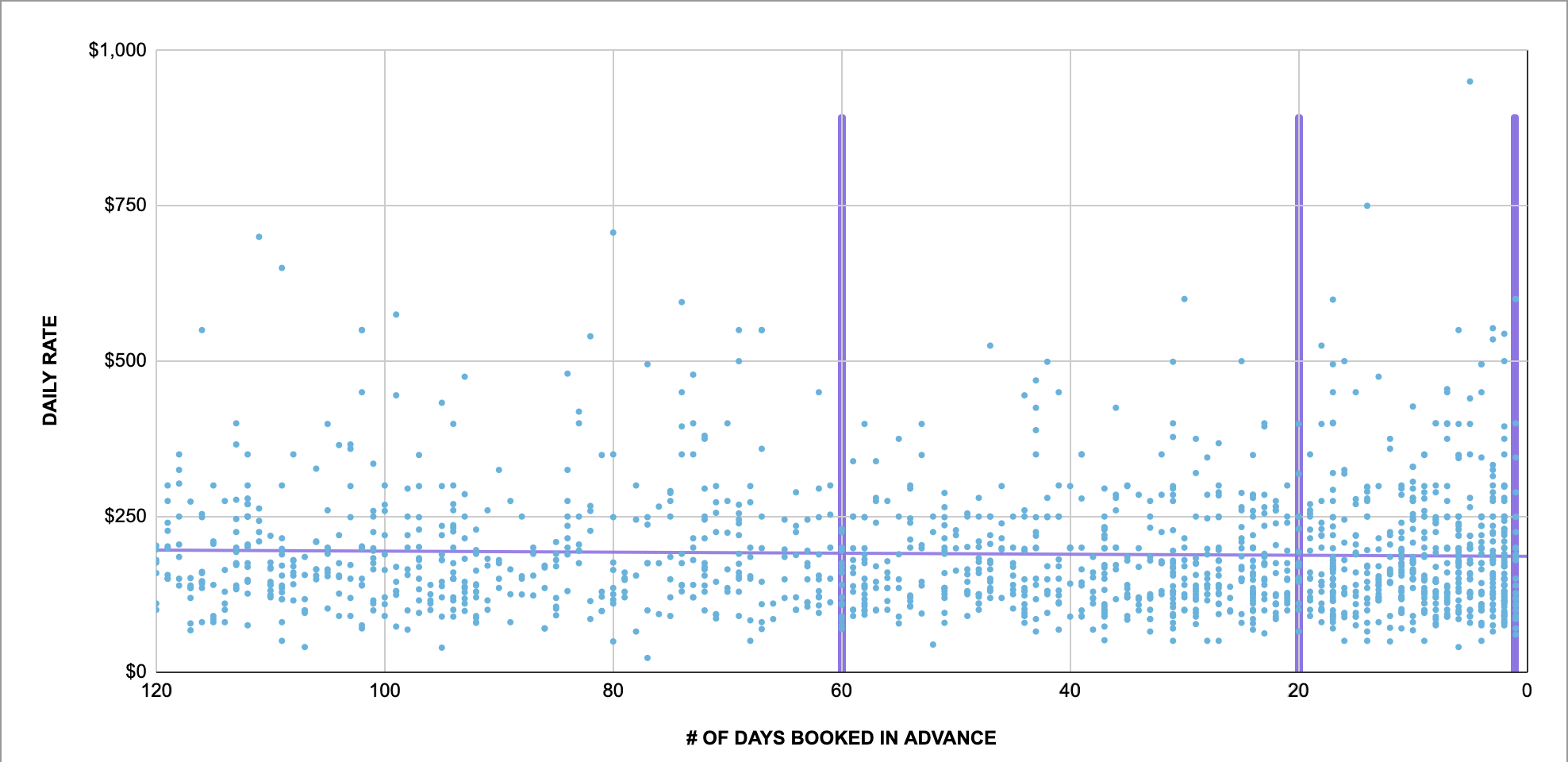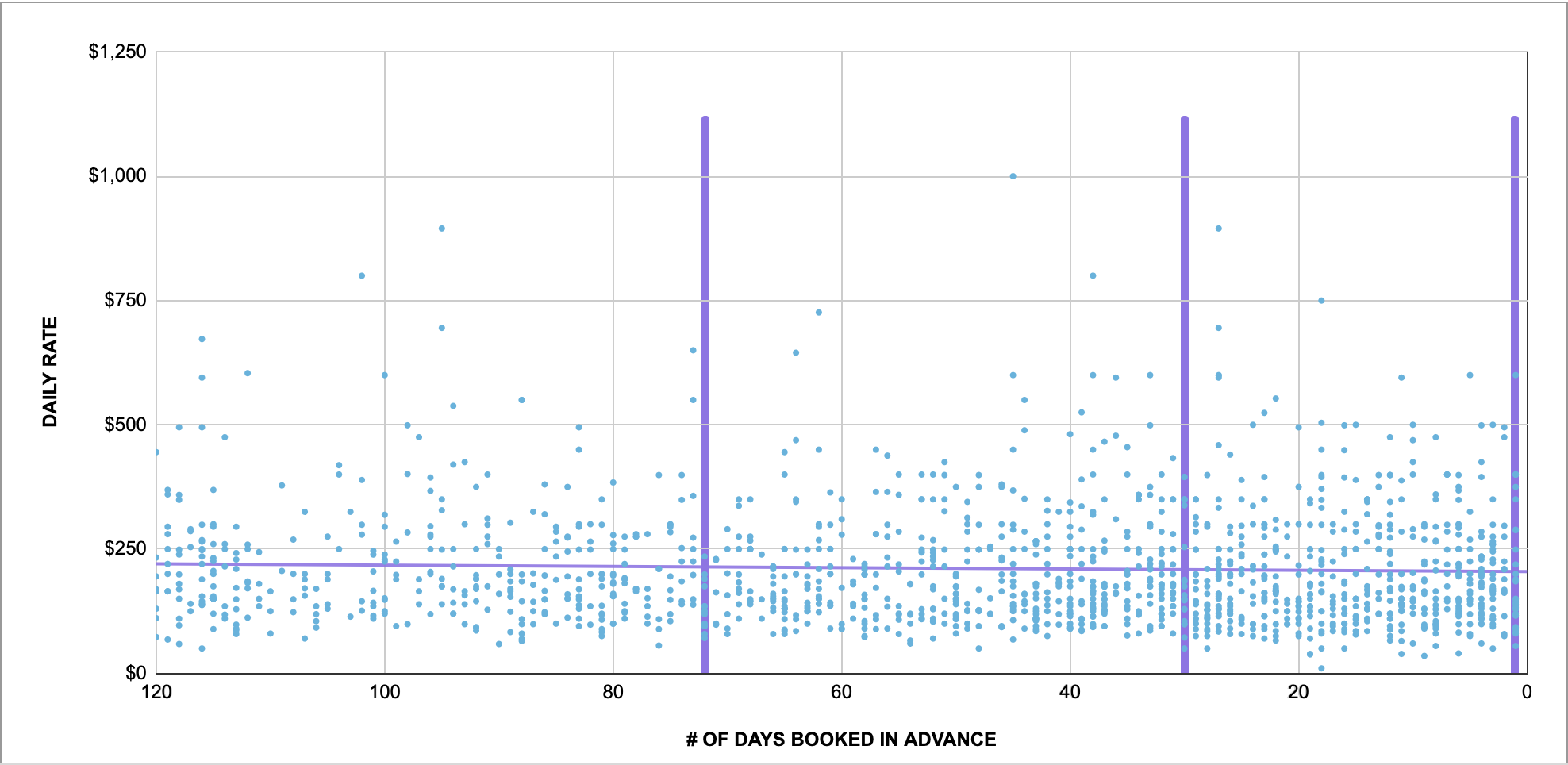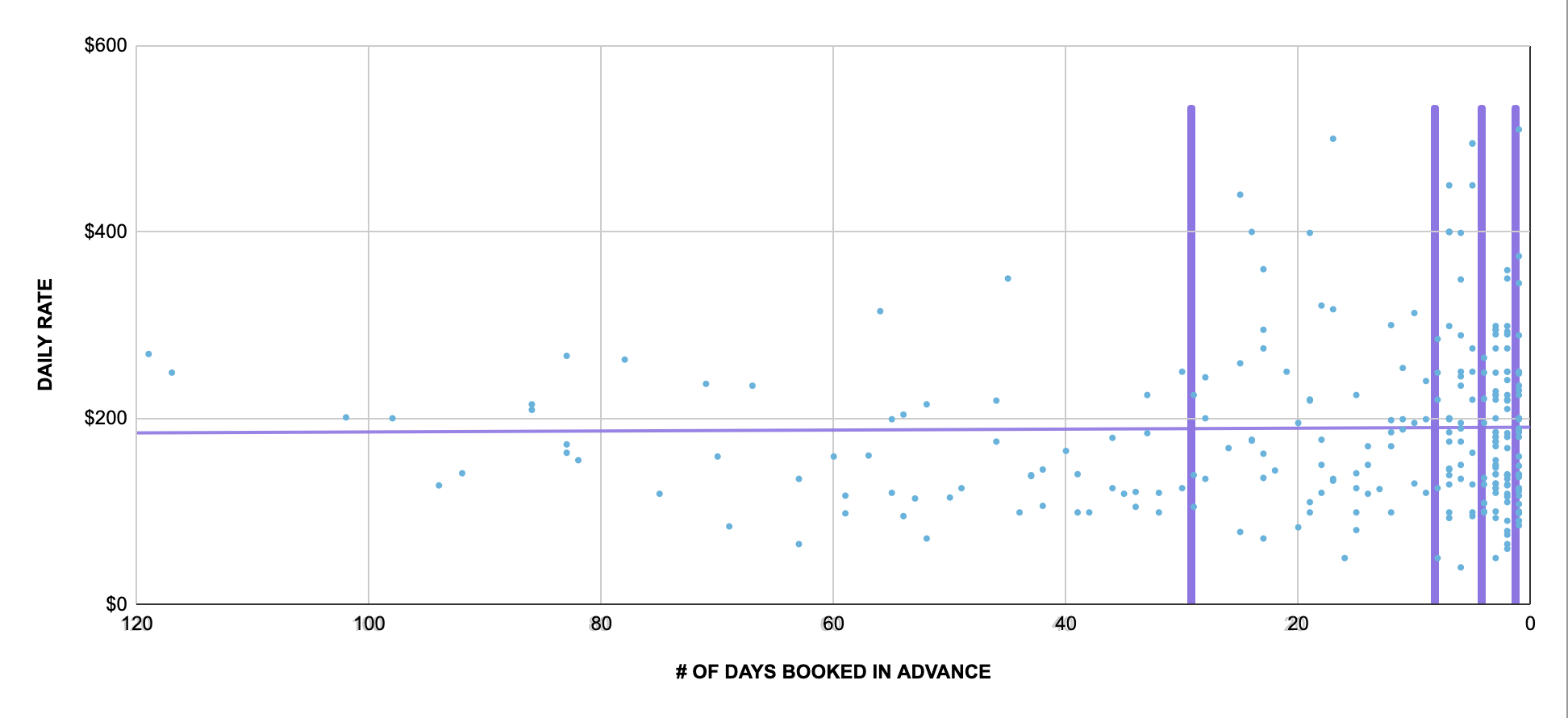Toward a Better Booking Window
Tim Speicher
9/21/2021
As I walked up to the Booking.com offices in Los Angeles, I thought to myself, “This is where the magic happens.” I had been invited to West Coast HQ to see some proprietary data that could help me better price my listings.
I met my contact, a large man with a beaming smile, who opened his laptop and asked, “Well, what do you want to know? We have the best data in the world at our fingertips.”
I thought for a moment and said, “Show me booking windows for December.” His keyboard rattled from the other side of the table and he responded, “Twenty-one.” “Twenty-one days?” I asked. “Yes,” he responded. “For which nights?” I asked. “For the whole month of December,” he said. “That’s crazy,” I replied, “because the first few weeks of the month are full of business travel with short booking windows, then there are the holidays with long booking windows, and finally there is New Year’s Eve which could be long or short depending on the stay length.’
We need a better booking window metric; something that can express each daily micro-environment on your calendar. We propose the Prime Booking Window. Let me show you how we use it at Buoy.
First, grab a date on the calendar. For this example we will choose December 5. Find every stay from the last three years with at least one date matching December 5. (Don’t forget to factor in day of week changes) Extract the purchase dates from those listings. You will end up with an array of dates like these:

The data tells a story. 50% of reservations were confirmed by October 7, 59 days in advance. 75% of reservations were confirmed by November 16, just 19 days in advance. Booking pace increases as the booking window closes.
Now let’s look at December 25.

The booking window on December 25 is significantly longer. 50% of reservations were confirmed by 72 days in advance, and 75% by 30 days in advance! The final booking window quartile, when reservation volume is the strongest, is 60% longer for December 25 than for December 5.
It gets even more severe when factoring in stay length. By the time short stays for December 5 hit 25% (November 27), week long stays for December 25 are already at 75%! How did we ever collapse this data into a single number?
Short stays on December 5 (2bd stays of 1-3 days):

Turns out my instincts from the Booking.com meeting were right! Without granular data there was no way to tell, and truly I underestimated how severe the difference would be. Isn’t this a better way to think about guest behavior than the average booking window?
So how do we use this data? Buoy keeps rates high until bookings hit 25%, then drops rates to be competitive until bookings hit 75%, and finally adjust rates either higher or lower depending on how booking pace compares with previous years. It’s essentially the same thing revenue managers have been doing for years, but with way more flexibility than our traditional booking window.
Tim Speicher
Tim Speicher is CEO and Co-Founder of Buoy, a new solution to revenue management that replaces a generic base rate with its own intuitive algorithm. For more information visit buoy.us.